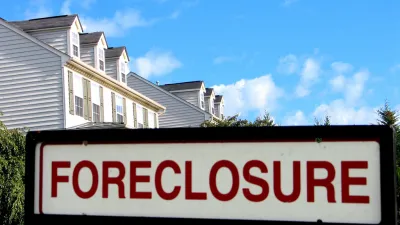The pandemic housing market may be a different beast from the recession market, but the outcomes could be eerily similar.

In the early weeks of 2008, as it became clear that millions of Americans were going to default on their mortgage payments and lose their homes to the recession, a bold idea emerged from a coalition of community development organizations.
What if a great number of these foreclosed properties could be swiftly acquired by nonprofit organizations and municipalities, which would then sell the housing stock to low- and moderate-income buyers?
It was a bold plan for diverting thousands of foreclosed homes away from private capital, back toward the people who are historically shut out of homeownership. Dubbed “the Great American Dream Neighborhood Stabilization Plan,” or GARDNS Fund, the framework called for a federal investment of $20 billion to grant in-community housers the purchasing power to obtain newly available housing and resell it affordably, with profits being funneled toward acquiring additional housing.
Instead, Congress coughed up $7 billion to fund a different plan, the Neighborhood Stabilization Program (NSP), which was festooned with red tape and cumbersome stipulations for how stabilization capital could or could not be used. “For the most part, I’d say [NSP] was not successful,” says Chris Herbert, managing director for Harvard’s Joint Center for Housing Studies. “It didn’t enable many nonprofits to quickly acquire properties in an effective way. Instead, the market for investor-purchased properties developed very fast. [Investors] became much more nimble.”
NSP wasn’t entirely a failure—it’s since evolved into a permanent program run by HUD, which still offers grants to community developers looking to add stock to their inventories. But a historic housing acquisition opportunity was missed during the program’s launch. Many of the foreclosed properties from the recession were subsumed by institutional investors like Blackstone Inc. and repurposed as market-rate rentals. This marked the beginning of a seismic shift away from homeownership, long held up as the gold standard of American lifestyles and one of the most reliable ways for a person of modest means to build wealth.
Between 2006 and 2015, 3.8 million Americans who once owned property became renters of single-family homes—a spike of more than 30 percent. Across 22 large U.S. cities, including Detroit, Tampa, and Honolulu, renters overtook property owners as the majority population. Between 2006 and 2016, the number of Americans renting their homes nationwide swelled by 25 percent. This expansion of rentals was partially enabled by the Federal Reserve’s decision to keep interest rates low: a boon for real estate investors. Stagnant wages and waning housing production exacerbated the problem, as more Americans were forced to rent and as more housing stock was added to portfolios.
For housers, the overarching question since the recession has been threefold. When will the next foreclosure crisis occur? When it happens, how can more foreclosed housing stock be recirculated back into the hands of affordable housing stewards? And will housers be ready for the next crisis?
The New Storm
The early economic shock waves of the COVID-19 pandemic appeared to mark the next cataclysm ...
FULL STORY: Pandemic Housing Market Is Not Like the Great Recession’s

Analysis: Cybertruck Fatality Rate Far Exceeds That of Ford Pinto
The Tesla Cybertruck was recalled seven times last year.

National Parks Layoffs Will Cause Communities to Lose Billions
Thousands of essential park workers were laid off this week, just before the busy spring break season.

Retro-silient?: America’s First “Eco-burb,” The Woodlands Turns 50
A master-planned community north of Houston offers lessons on green infrastructure and resilient design, but falls short of its founder’s lofty affordability and walkability goals.

Test News Post 1
This is a summary

Analysis: Cybertruck Fatality Rate Far Exceeds That of Ford Pinto
The Tesla Cybertruck was recalled seven times last year.

Test News Headline 46
Test for the image on the front page.
Urban Design for Planners 1: Software Tools
This six-course series explores essential urban design concepts using open source software and equips planners with the tools they need to participate fully in the urban design process.
Planning for Universal Design
Learn the tools for implementing Universal Design in planning regulations.
EMC Planning Group, Inc.
Planetizen
Planetizen
Mpact (formerly Rail~Volution)
Great Falls Development Authority, Inc.
HUDs Office of Policy Development and Research
NYU Wagner Graduate School of Public Service

























